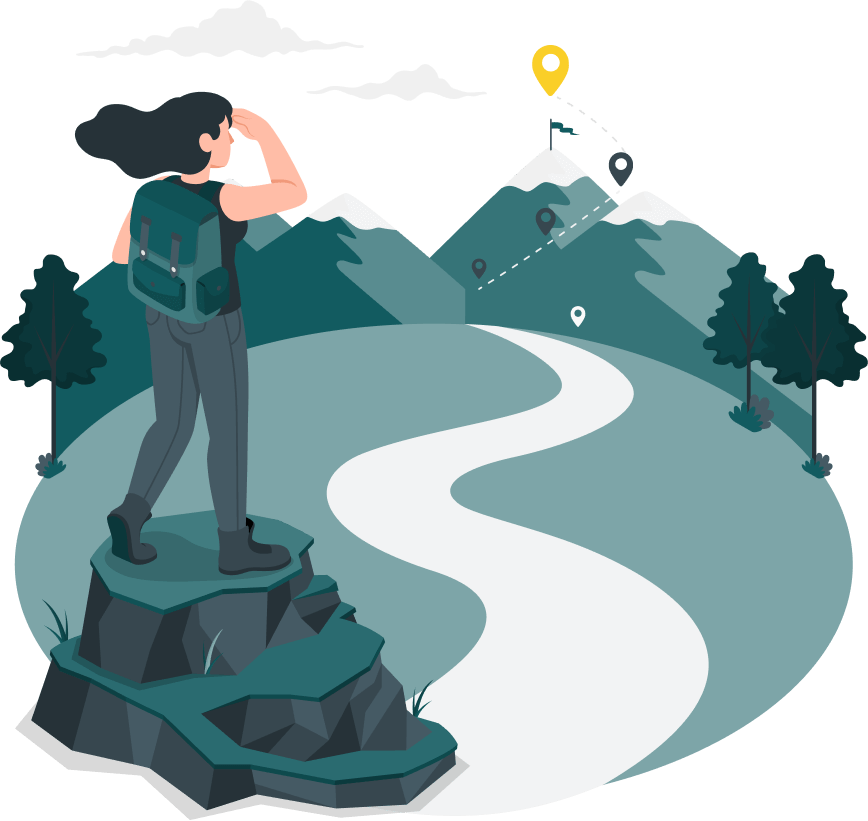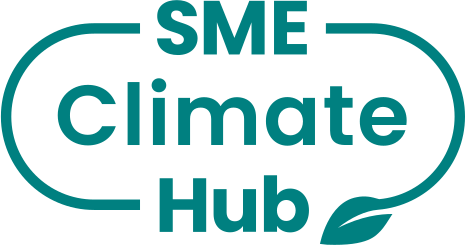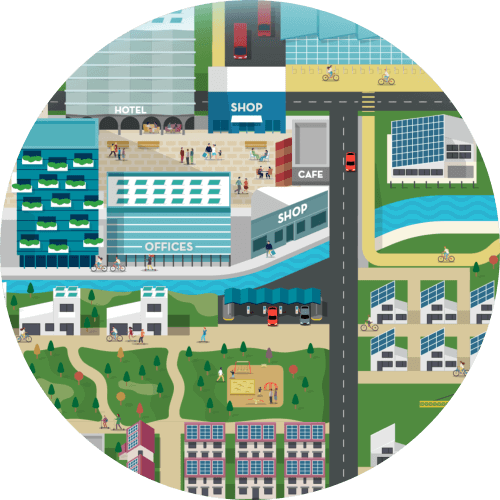اطلع على الخطوات التي يمكن لشركتك اتخاذها نحو مستقبل أكثر استدامة من خلال مواردنا المفتوحة.
Everflow Water's Climate Report
Introduction *
Commitment And Targets *
Own emissions *
Value chain emissions *
(optional)Actions and plans to reduce emissions *
Climate Solutions *
(optional)Management and strategy *
(optional)Results, challenges and outlook *
Introduction *
reporting year
*2022
number of employees in the reporting year
*151
Commitment And Targets *
net zero target year
*2040
Base year
*2022
near-term scope 1 target
*50
target year
*2027
near-term scope 2 target
*50
target year
*2027
comment on your near-term targets
*We have more influence over our customers than our supply chain (for whom we represent a small proportion of our suppliers' business), so we are helping our customers reduce their carbon footprints by saving water and energy.
Own emissions *
scope 1 emissions
scope 1 emissions (metric tons co2e)
*26
own facilities
*26
metric tons CO2eown vehicles
*N/A
own processes
*N/A
scope 2 emissions
scope 2 emissions (metric tons co2e)
*14
total energy consumption (kwh)
*83440
renewable energy
*-
purchased electricity
*14
metric tons CO2eRenewable electricity (%)
-
purchased steam
*N/A
Renewable electricity (%)
-
purchased heating
*N/A
Renewable electricity (%)
-
purchased cooling
*N/A
Renewable electricity (%)
-
Value chain emissions (optional) *
scope 3 emissions
scope 3 emissions (metric tons co2e)
*1486
supply chain related - upstream emissions
purchased goods and services
*1454.58
metric tons CO2ecapital goods
*N/A
fuel and energy related activities
*N/A
transportation and distribution (upstream)
*N/A
waste in operations
*Not measured
business travel
*8.46
metric tons CO2eemployee commuting
*24.42
metric tons CO2eleased assets (upstream)
*N/A
customer related - downstream emissions
transportation and distribution (downstream)
*N/A
processing of sold products
*N/A
use of sold products
*N/A
end-of-life treatment of products
*N/A
leased assets (downstream)
*N/A
franchises
*N/A
investments
*N/A
List any sources of emissions excluded:
*We have not included our customers' use of water and wastewater or waste collection services. We have however voluntarily offset their volumetric usage of these services for 2021-23.
describe the calculation methodology and comment on accuracy:
*Used GHG Protocol and SECR methodology
Actions and plans to reduce emissions *
Scope 1 Actions
own facilities
Yes
1) Move to new HQ which has achieved a building energy rating of A and has no gas heating. 2) Track electricity and water usage using smart meters for all offices. 3) Investigate how we can improve the efficiency of our air conditioning systems with our landlords (e.g., there are refrigerants with a lower global warming potential than R407C and can we reduce fugitive emissions, i.e., escape of these gases requiring annual top-ups). 4) Hybrid working policy allows most employees to work from home 2-3 days a week. We calculate that every additional day per week that employees work from home should save 5 tonnes of CO2e from commuting, and add 4.5 tonnes of CO2e from additional heating and electricity use in the home, so a net half a tonne saving.
own vehicles
N/A
-
own processes
N/A
-
scope 2 actions
purchased electricity
Yes
100% renewable electricity by 2027
purchased steam
N/A
-
purchased heating
N/A
-
purchased cooling
N/A
-
scope 3 actions
supply chain related (upstream)
purchased good and services
*Yes
Purchasing refurbished laptops and ensuring old ones are reused elsewhere is likely to have the most impact on our procurement, as it is most in our control and contributes the most emissions. Switching to more sustainable facilities and influencing our landlords to adopt more sustainable practices will also have a large impact. Because a lot of our purchased services are rent. While lots of emissions are associated with our software subscriptions, many of these suppliers will be too large for us to influence, and as large businesses we know many of them are already pursuing sustainability. We engaged with our large supply chain in late 2021 who undertake meter reading, debt collection, broker sales and other professional services to encourage them to set targets in line with the race to zero and educate them about how to do this.
capital goods
*N/A
-
fuel and energy related activities
*N/A
-
transportation and distribution (upstream)
*N/A
-
waste in operation
*Yes
We will separate and monitor our waste (recycling vs general) at our new offices and identify ways to reduce this. A new sustainable procurement policy will favour suppliers using recycled/recyclable/reusable materials etc who are on the road to net zero
business travel
*Yes
We will update our Travel and Expenses policy to favour hotels with net zero plans and encourage use of public transport and car sharing.
employee commuting
*Yes
Salary sacrifice Electric Vehicle leasing scheme and cycle to work scheme for employees. Car sharing matching scheme for employee commuting. Install EV charging points at our new HQ. Most of the flights booked by the company are associated with one remote working Director, and their emissions are offset by the airline as standard.
upstream leased assets
*N/A
-
customer related (downstream)
transportation and distribution (downstream)
*N/A
-
processing of sold products
*N/A
-
use of sold products
*Yes
We will offer water efficiency and more holistic EcoMOT services to our business customers, to help them reduce their carbon footprint along with their utility bills.
end-of-life treatment of products
*N/A
-
leased assets (downstream)
*N/A
-
franchises
*N/A
-
investments
*N/A
-
i have asked my suppliers to halve emissions before 2030 and join the un-backed race to zero campaign
*Yes
percentage (%) of suppliers asked
*50
percentage (%) of suppliers committed
*-
i have communicated my commitment and actions to my business customers and asked them to join the un race to zero
*Yes
percentage (%) of business customers asked
*50
Percentage (%) of business customers committed
*-
Climate Solutions (optional) *
What percentage of your total revenue comes from sales of climate solutions?
*1
How much of your research and development budget is allocated to climate solutions?
*5
are you investing in climate and/or nature outside your value chain?
*Yes
provide details of the project/s you invest in:
*We offset all our own emissions (and our customer's volumetric consumption of water, wastewater, and waste collection services).
how are they quality secured?
*UNFCCC/VERRA
which value do they represent (in usd)?
*£64,675 ($80,000, at current exchange rate 20 sept 2023)
Management and strategy (optional) *
Results, challenges and outlook *

Everflow Water's Climate Report
Everflow Water's Climate Report - 2022
Introduction *
reporting year
*2022
number of employees in the reporting year
*151
Commitment And Targets *
net zero target year
*2040
Base year
*2022
near-term scope 1 target
*50
target year
*2027
near-term scope 2 target
*50
target year
*2027
comment on your near-term targets
*We have more influence over our customers than our supply chain (for whom we represent a small proportion of our suppliers' business), so we are helping our customers reduce their carbon footprints by saving water and energy.
Own emissions *
scope 1 emissions
scope 1 emissions (metric tons co2e)
*26
own facilities
*26
metric tons CO2eown vehicles
*N/A
own processes
*N/A
scope 2 emissions
scope 2 emissions (metric tons co2e)
*14
total energy consumption (kwh)
*83440
renewable energy
*-
purchased electricity
*14
metric tons CO2eRenewable electricity (%)
-
purchased steam
*N/A
Renewable electricity (%)
-
purchased heating
*N/A
Renewable electricity (%)
-
purchased cooling
*N/A
Renewable electricity (%)
-
Value chain emissions (optional) *
scope 3 emissions
scope 3 emissions (metric tons co2e)
*1486
supply chain related - upstream emissions
purchased goods and services
*1454.58
metric tons CO2ecapital goods
*N/A
fuel and energy related activities
*N/A
transportation and distribution (upstream)
*N/A
waste in operations
*Not measured
business travel
*8.46
metric tons CO2eemployee commuting
*24.42
metric tons CO2eleased assets (upstream)
*N/A
customer related - downstream emissions
transportation and distribution (downstream)
*N/A
processing of sold products
*N/A
use of sold products
*N/A
end-of-life treatment of products
*N/A
leased assets (downstream)
*N/A
franchises
*N/A
investments
*N/A
List any sources of emissions excluded:
*We have not included our customers' use of water and wastewater or waste collection services. We have however voluntarily offset their volumetric usage of these services for 2021-23.
describe the calculation methodology and comment on accuracy:
*Used GHG Protocol and SECR methodology
Actions and plans to reduce emissions *
Scope 1 Actions
own facilities
Yes
1) Move to new HQ which has achieved a building energy rating of A and has no gas heating. 2) Track electricity and water usage using smart meters for all offices. 3) Investigate how we can improve the efficiency of our air conditioning systems with our landlords (e.g., there are refrigerants with a lower global warming potential than R407C and can we reduce fugitive emissions, i.e., escape of these gases requiring annual top-ups). 4) Hybrid working policy allows most employees to work from home 2-3 days a week. We calculate that every additional day per week that employees work from home should save 5 tonnes of CO2e from commuting, and add 4.5 tonnes of CO2e from additional heating and electricity use in the home, so a net half a tonne saving.
own vehicles
N/A
-
own processes
N/A
-
scope 2 actions
purchased electricity
Yes
100% renewable electricity by 2027
purchased steam
N/A
-
purchased heating
N/A
-
purchased cooling
N/A
-
scope 3 actions
supply chain related (upstream)
purchased good and services
*Yes
Purchasing refurbished laptops and ensuring old ones are reused elsewhere is likely to have the most impact on our procurement, as it is most in our control and contributes the most emissions. Switching to more sustainable facilities and influencing our landlords to adopt more sustainable practices will also have a large impact. Because a lot of our purchased services are rent. While lots of emissions are associated with our software subscriptions, many of these suppliers will be too large for us to influence, and as large businesses we know many of them are already pursuing sustainability. We engaged with our large supply chain in late 2021 who undertake meter reading, debt collection, broker sales and other professional services to encourage them to set targets in line with the race to zero and educate them about how to do this.
capital goods
*N/A
-
fuel and energy related activities
*N/A
-
transportation and distribution (upstream)
*N/A
-
waste in operation
*Yes
We will separate and monitor our waste (recycling vs general) at our new offices and identify ways to reduce this. A new sustainable procurement policy will favour suppliers using recycled/recyclable/reusable materials etc who are on the road to net zero
business travel
*Yes
We will update our Travel and Expenses policy to favour hotels with net zero plans and encourage use of public transport and car sharing.
employee commuting
*Yes
Salary sacrifice Electric Vehicle leasing scheme and cycle to work scheme for employees. Car sharing matching scheme for employee commuting. Install EV charging points at our new HQ. Most of the flights booked by the company are associated with one remote working Director, and their emissions are offset by the airline as standard.
upstream leased assets
*N/A
-
customer related (downstream)
transportation and distribution (downstream)
*N/A
-
processing of sold products
*N/A
-
use of sold products
*Yes
We will offer water efficiency and more holistic EcoMOT services to our business customers, to help them reduce their carbon footprint along with their utility bills.
end-of-life treatment of products
*N/A
-
leased assets (downstream)
*N/A
-
franchises
*N/A
-
investments
*N/A
-
i have asked my suppliers to halve emissions before 2030 and join the un-backed race to zero campaign
*Yes
percentage (%) of suppliers asked
*50
percentage (%) of suppliers committed
*-
i have communicated my commitment and actions to my business customers and asked them to join the un race to zero
*Yes
percentage (%) of business customers asked
*50
Percentage (%) of business customers committed
*-
Climate Solutions (optional) *
What percentage of your total revenue comes from sales of climate solutions?
*1
How much of your research and development budget is allocated to climate solutions?
*5
are you investing in climate and/or nature outside your value chain?
*Yes
provide details of the project/s you invest in:
*We offset all our own emissions (and our customer's volumetric consumption of water, wastewater, and waste collection services).
how are they quality secured?
*UNFCCC/VERRA
which value do they represent (in usd)?
*£64,675 ($80,000, at current exchange rate 20 sept 2023)
Management and strategy (optional) *
Results, challenges and outlook *
Not sure how to start?
See the steps you can take and get help building a plan to cut your business emissions today.
¿No estás seguro de por dónde empezar?
Revisa los pasos que puedes dar y obtén ayuda para elaborar un plan para reducir las emisiones de tu empresa hoy mismo.
لست متأكداً كيف تبدأ؟
اطلع على الخطوات التي يمكنك اتخاذها واحصل على المساعدة في وضع خطة لخفض انبعاثات شركتك اليوم.
Vous ne savez pas par où commencer ?
Découvrez les mesures que vous pouvez prendre et obtenez de l’aide pour élaborer un plan pour réduire les émissions de votre entreprise dès aujourd’hui.
Osäker på hur du ska börja?
Se vilka steg du kan ta och få hjälp med att utforma en plan för att minska dina företagsutsläpp idag.
Ready to commit to lower emissions?
It’s easy to make the commitment. Just complete a form sharing your intent to reduce your emissions.
You’ll earn public recognition for taking the first step.
¿Listo para comprometerte a reducir tus emisiones?
Es fácil comprometerse. Solo tienes que completar un formulario compartiendo tu intención de reducir tus emisiones.
Ganarás reconocimiento público por tomar este primer paso.
هل أنت مستعد للالتزام بتقليل الانبعاثات؟
الالتزام سهل. ما عليك سوى تعبئة نموذج لمشاركة عزمك على تقليل انبعاثاتك.
سوف تحظى باعتراف عام باتخاذك الخطوة الأولى.
Prêt à vous engager pour réduire les émissions ?
S’engager est simple. Il suffit de remplir un formulaire indiquant votre intention de réduire vos émissions.
Vous gagnerez une reconnaissance publique pour avoir fait le premier pas.
Redo att åta sig att minska utsläppen?
Det är enkelt att göra åtagandet. Fyll bara i ett formulär där du delar med dig av din avsikt att minska dina utsläpp.
Du kommer att få offentligt erkännande för att du tagit det första steget.
Register now to use our tools
Register now to use our tools

ابقَ على اطلاع!
اشترك في نشرتنا الإخبارية للبقاء على اطلاع بأحدث التطورات المناخية.
تسجيل الدخول
Don't have an account? Create account to access our tools or make the SME Climate Commitment
تسجيل الدخول
Don't have an account? Create account to access our tools or make the SME Climate Commitment
تسجيل الدخول
Don't have an account? Create account to access our tools or make the SME Climate Commitment
هل نسيت كلمة المرور؟
Please enter your email address. You will receive a link to create a new password via email.

 Go back
Go back

